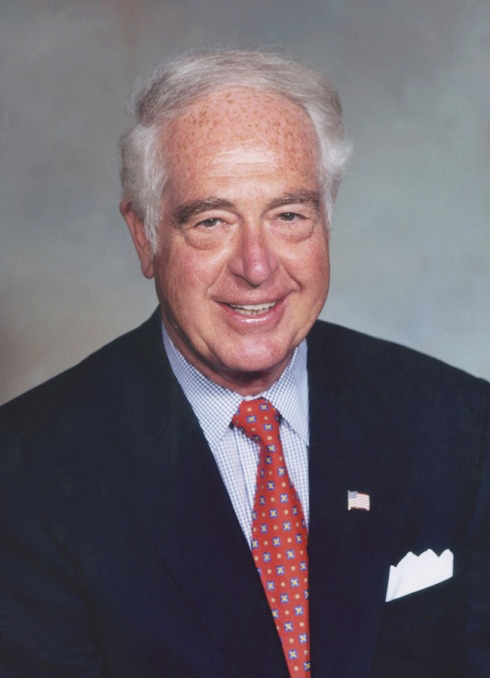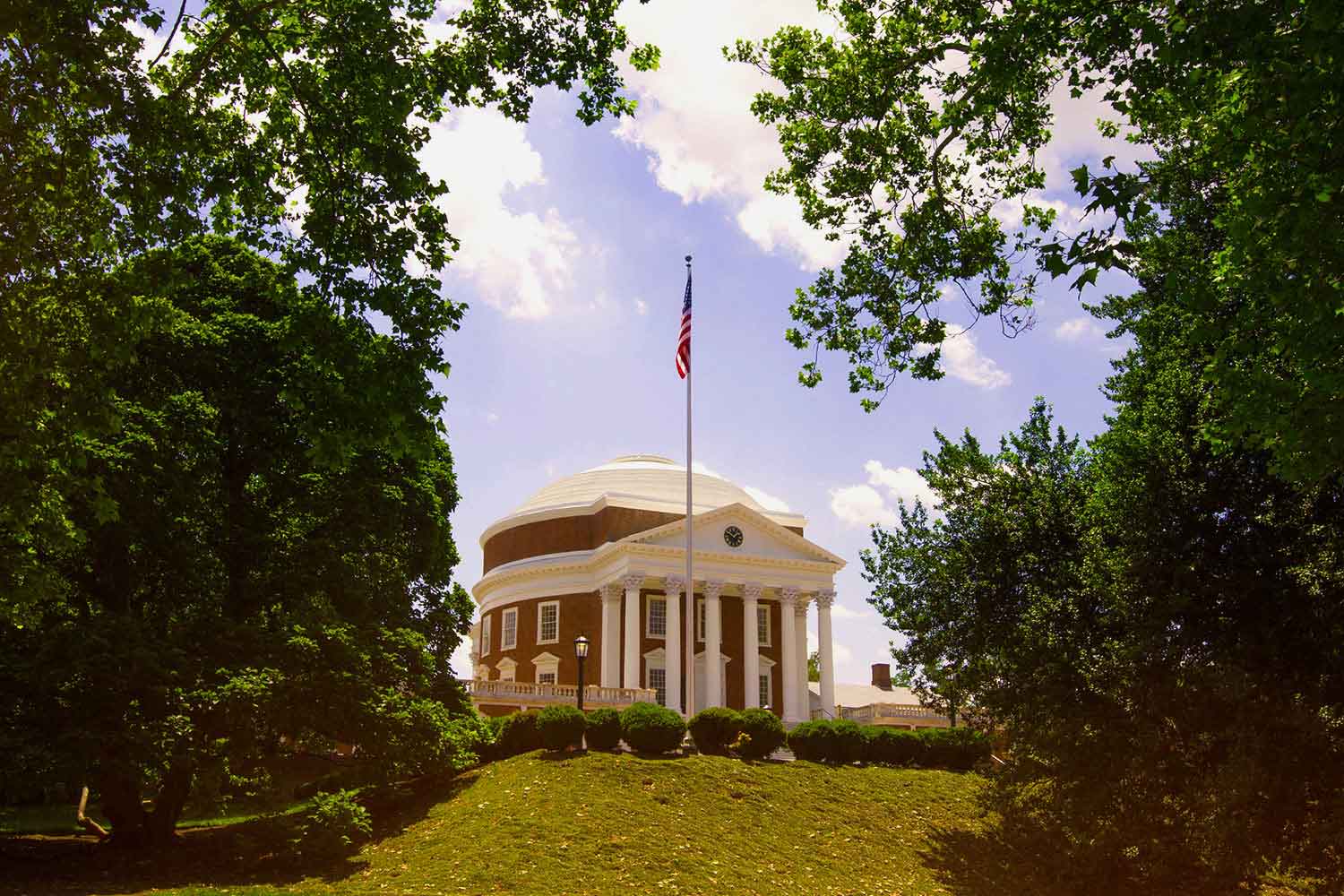The University of Virginia’s Strategic Investment Fund is anything but a so-called “slush fund,” as it recently has been mischaracterized. That makes for catchy headlines, but it is false and irresponsible.
Virginians deserve better than an oversimplification on issues as important as quality and affordability of higher education.
In truth, this fund is as an extraordinary opportunity to improve academic quality, help minimize tuition costs and student debt, conduct research that benefits society, and offer world-class medical care.

William H. Goodwin Jr.
Those kinds of returns don’t come from slush funds. They are the very outcomes that a community, a commonwealth and the world gain from a thriving research institution of public higher education. They benefit students today and, I strongly believe, for many years to come.
These returns don’t happen overnight, and they don’t reflect the aspirations of those with narrow and sometimes negative agendas.
In fact, making decisions in the best interests of future generations is a hallmark of how UVA has been historically managed. This is the spirit behind the Strategic Investment Fund.
So how did we get to a place where the University felt confident enough to pool resources for such a fund? I can tell you it was not through hiding balances on the books or by having administrators who operated independently of our governing board. The Board of Visitors may have authorized this fund in February, but it was possible only because of sound stewardship at UVA for more than 25 years.
For decades, UVA has had the rare fortune of generations of loyal and generous alumni and friends. It has also partnered with the state and federal governments to fund operations, research and capital projects. It has established and grown mandated reserves to ensure its AAA-bond rating and to persevere through difficult economies and fluctuating state support, and has the remarkable good fortune of earning significant returns on its investments.
Since its founding, UVA has given back, producing citizen leaders who contribute as elected representatives, scientists, doctors, engineers, educators and much more. The fruits of our research have helped us better understand the human immune system, pursue cures for debilitating conditions and improve our academic offerings, to cite only a few. Our Health System experiences nearly a million patient visits a year, and our safety-net hospital serves all comers.
All of these require significant, sustained investment.
I have been fortunate to serve at a time when the Board of Visitors, President Terry Sullivan, her administration and the faculty have worked closely with a particular emphasis on the financial management of the University. We have approved and are implementing a new strategic plan. We have formalized our efforts to find efficiencies and cost-savings. We constructed and put into place a multiyear financial plan that addresses the University’s priorities across years instead of starting from scratch every budget cycle.
We have approved and implemented a program, Affordable Excellence, to ensure that tuition increases, when necessary, are predictable and minimal, while dramatically reducing the amount of student debt facing Virginia families. Middle class Virginia families directly benefit from this relief as do those with high financial need.
These efforts help Virginians; they provide more value to an education and they put our students in better positions to contribute to the Commonwealth and beyond.
All of this, by the way, has occurred in the bright light of day, during meetings open to the public.
As an example of UVA’s substantial commitment to affordability and access, the University projects it will award approximately $60 million in tuition grants that don’t need to be repaid in the coming academic year to undergraduate students, over two-thirds of whom are Virginians.
How do we compare with others? Money magazine determined that UVA has the lowest average yearly cost of attendance of any institution ranked in its Top 100. That bears repeating. Of the absolute best public and private universities in America, the most affordable is the University of Virginia.
Today, this combination of fiscal stewardship and resource management has placed the University of Virginia in a truly extraordinary position to make investments that will benefit generations of students and Virginians in the widest variety of ways and for the longest period of time.
Using a Board-approved endowment payout formula, the Strategic Investment Fund could allocate as much as $100 million annually for initiatives with the highest promise to significantly improve the University and enhance quality and access for students.
Money magazine determined that UVA has the lowest average yearly cost of attendance of any institution ranked in its Top 100.
The possibilities are endless. They might include specialized equipment or research labs, recruitment of the finest faculty talent, or initiatives that enhance student life. They could include seed money for endowed student scholarships; support programs to further improve access and affordability for Virginians, and more.
This is no blank check. Investments will be for limited periods. They’ll be tracked and evaluated.
And to dispel another catchy but inaccurate phrase used by a former Board colleague, these investments won’t be administrative or Board “pet projects.” Such a characterization conveniently ignores a rigorous, multi-stage process that accepts proposals from across the University community and subjects them to a faculty committee review, an assessment by a leadership committee, and final approval by the Board.
Pet projects don’t survive that level of scrutiny.
The investments will align with the strategic plan and will be consistent with our long-term financial plan and Affordable Excellence initiative.
I doubt many people would argue with the overall goals and potential benefits of this strategy. But there always will be healthy debate about the best use of resources – especially when there are so many worthy places in which to invest.
Virginians who are striving to put their children through college have a fair question of why these funds aren’t being used in the moment to provide additional tuition assistance.
Just as Virginia families know a college education is a worthy investment, we see the Strategic Investment Fund as a worthy use of resources – one that will only add value to a student’s decision to attend UVA and for generations who follow by giving UVA a sustainable way to invest in its quality without using tuition or tax dollars to do so.
To the extent that investments from this fund allow the University to address long-term excellence without using tuition, the net effect will be greater affordability and value – not for a year or two, but well into the future.
Don’t let critics with personal agendas distract from or minimize what, at UVA’s foundation, is a compelling story for anyone who knows the true long-term value of healthy and thriving public universities that exist to serve our society.
William H. Goodwin Jr., of Richmond, is Rector of the University of Virginia Board of Visitors.
Previous UVA Today coverage of the Strategic Investment Fund:
Fund to Propel Strategic Investments in Academic, Research and Health Care Excellence
Questions and Answers About the University’s Strategic Investment Fund
Media Contact
Article Information
August 1, 2016
/content/compelling-case-uvas-strategic-investment-fund

